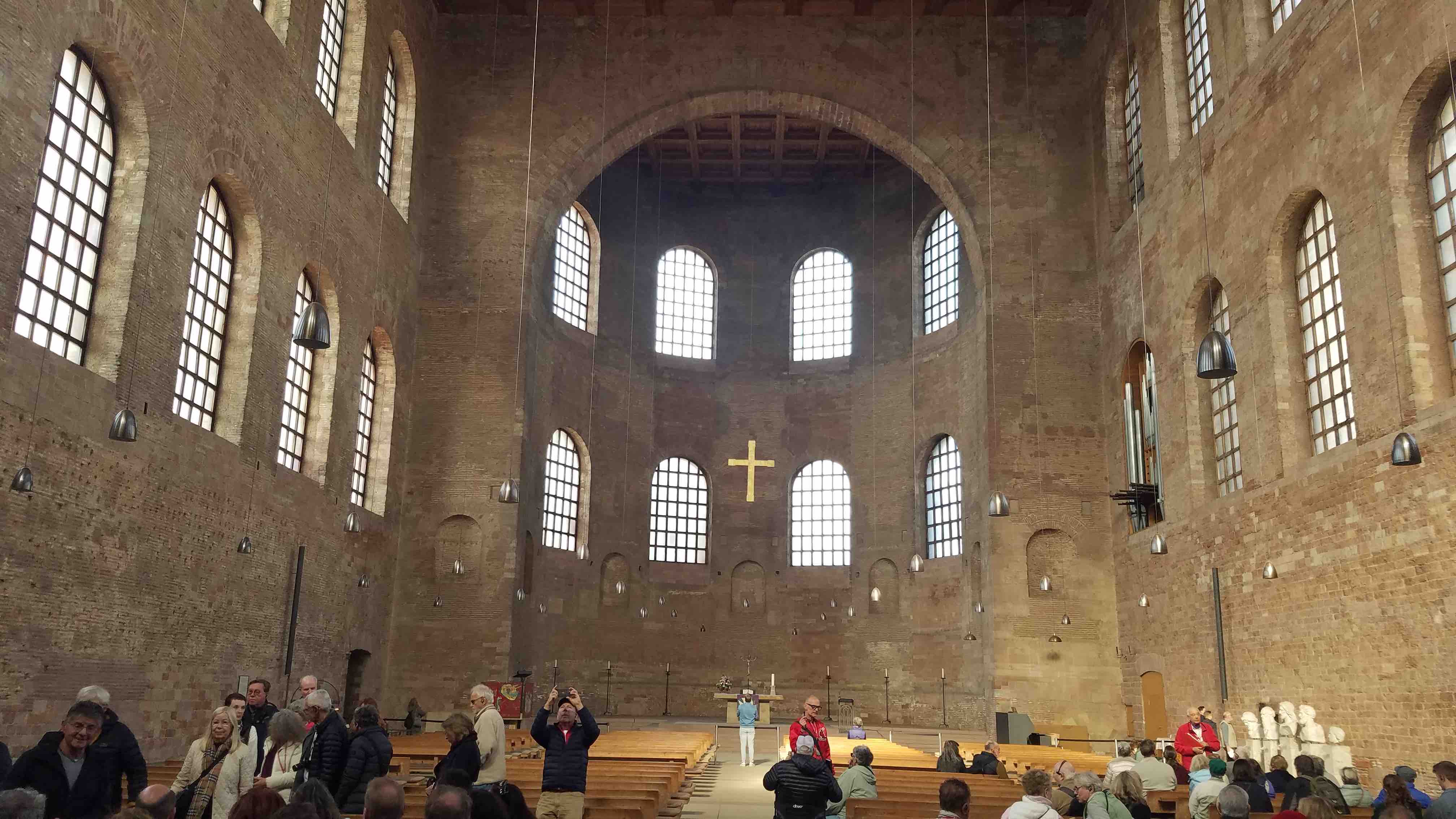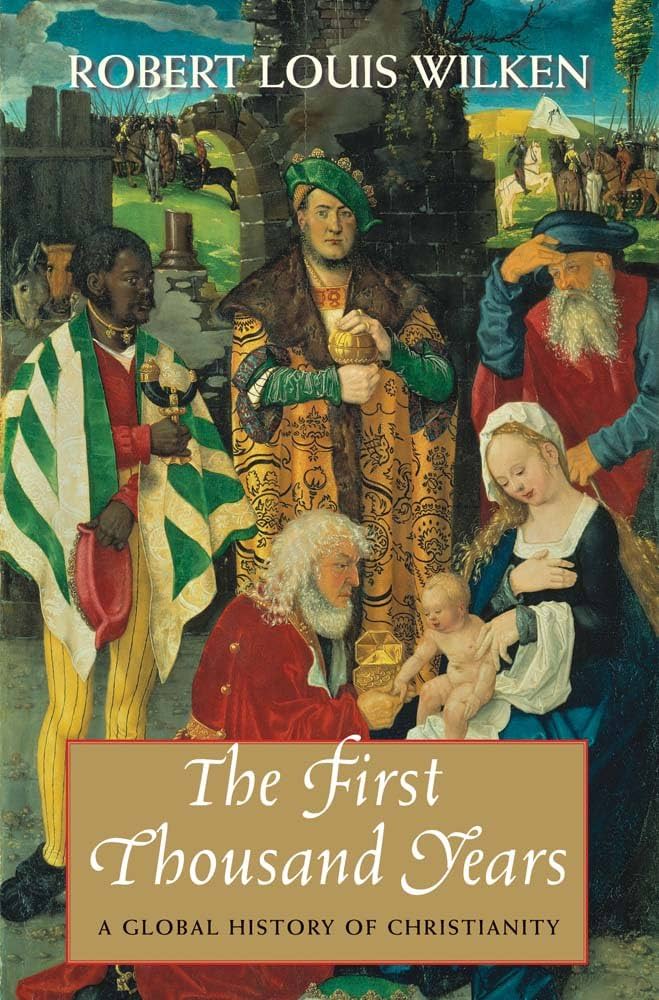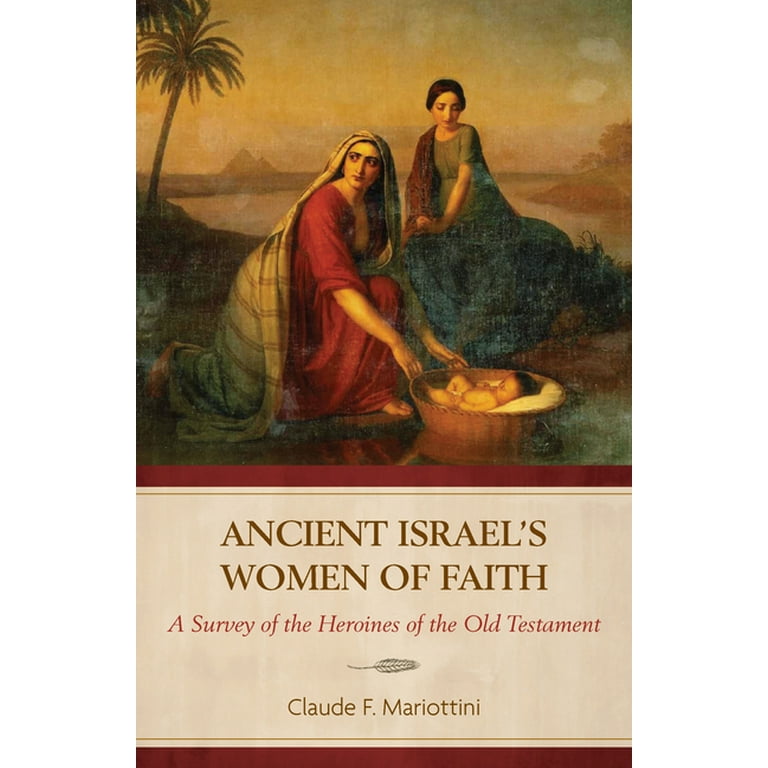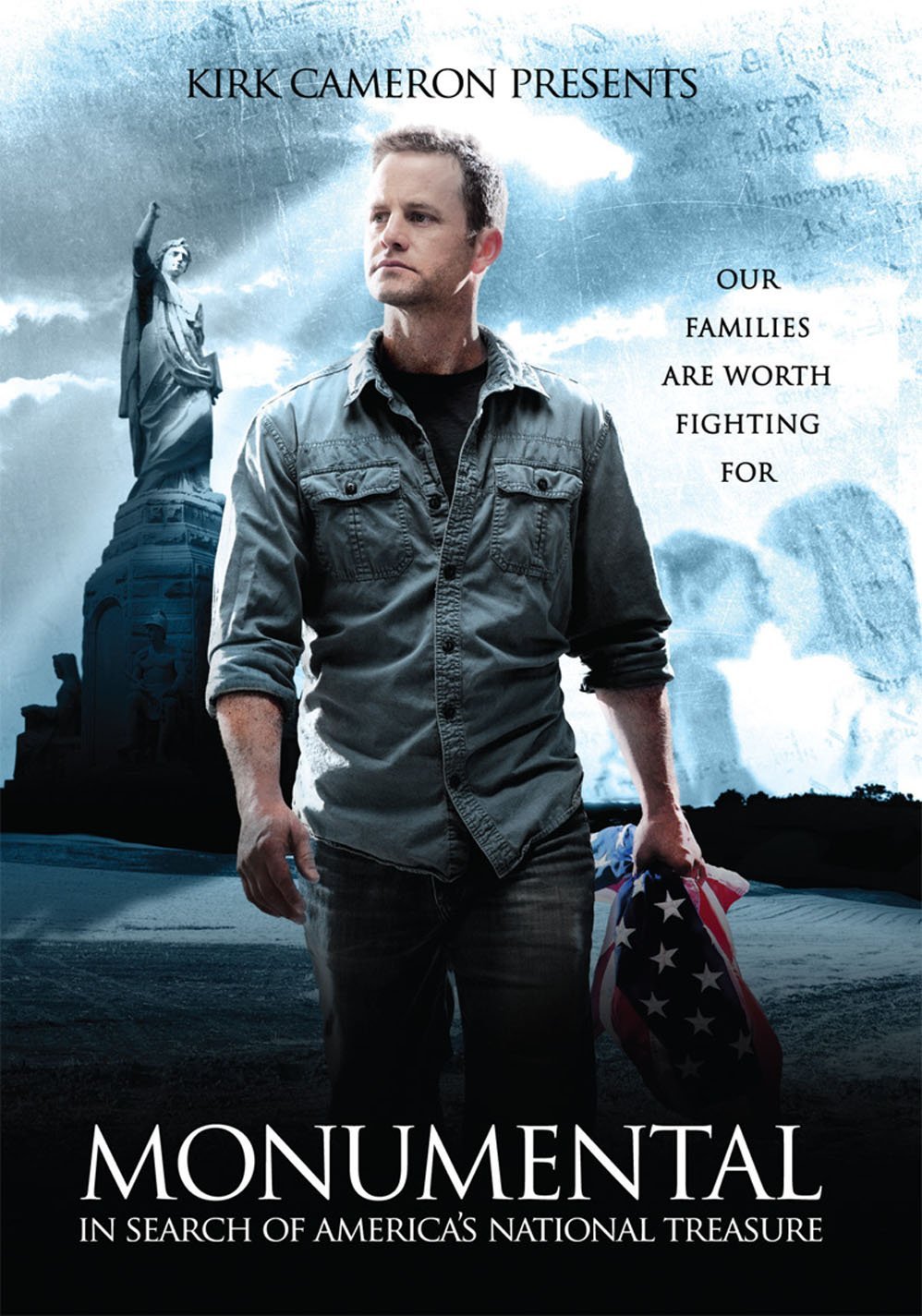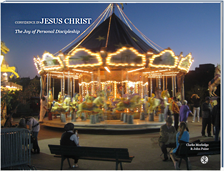Alas, another year is passing by, and 2025 is just about over. For this last blog post of 2025, I have few introductory comments as we look forward to the New Year, before I address the topic at hand…..
For 2026, I have a few more blog posts scheduled for the “Christianity Along the Rhine” series, a kind of travelogue reflecting on some of the places visited by my wife and I this past October in Europe.
Recently, I have been listening to Barry Strauss’ fascinating new book, Jews vs. Rome: Two Centuries of Rebellion Against the World’s Mightiest Empire. Wow! The backstory to Rome’s relationship to the Israel of Jesus’ day is something I rarely ever hear about in church…. and its connection to contemporary news events in Gaza brings more depth to the daily news. But wow, I am hooked on the story! I want to learn more!!
Plus, I have been doing a lot of thinking about “penal substitutionary atonement” over the past year and a half. The topic of Christ’s death on the cross comes up nearly every week at our church, either through a talking point in a sermon or a song sung in worship, affirming some version of “penal substitutionary” theory, which probably sounds like a bunch of blah-blah-blah intellectual talk to most Christians. However, the topic has been becoming quite controversial in evangelical circles lately, and a lot of the controversy has to deal with newer scholarship dealing with ancient Jewish understandings of Levitical law and, in particular, how Jesus thought about it. I have been doing some reading on this and related topics, which I hope to blog about (more) in 2026.
Also, coming soon in 2026 will be some blogging focus on Augustine of Hippo, perhaps the most influential father of the early church.
Oh, and one more thing: Why do I still bother with long-form blogging, when it seems to have gone out-of-fashion in favor of pithy Instagram and Facebook posts? Well, sometimes in takes some effort to get the truth right, in a world where misinformation seems like the norm these days. I mean, sometimes it just feels pointless having to deal with such wacky stuff out there on the Interwebs. No one can fix it all. But perhaps what I write might have a positive impact on some people, even if just a handful, and if all else fails, it gives me a chance to learn and grow.
I have already commented recently on bizarre conspiracy thinking which has taken hold of certain corners of right-wing evangelicalism (who would have expected an ideological implosion at the Heritage Foundation ???). But you also hear a good bit of nonsense from outside of the church.
For example, on Christmas Eve, Dan Snow at History Hit had an interview with biological anthropologist and U.K. television personality Alice Roberts. Yet the topic was not in Roberts’ field of expertise, but rather on the rise of Christianity in the Roman Empire, which is relevant to the subject of this blog post: the Council of Nicaea. I normally like History Hit, but this interview just seemed off ….. (Was Constantine merely interested in Christianity and trying to resolve the Arian controversy in Alexandria, Egypt, simply because Egypt supplied nearly all of Rome’s needs for wheat??? Was it all about politics and grain, and nothing to do with knowing God??).
Thankfully, I wandered over to Tim O’Neill’s History for Atheists blog, and Tim has a lengthy, thorough, and scathing review of Roberts’ book, which sets the record straight. As Tim writes, Alice Roberts made her name in television through her biological anthropology work, particularly with the BBC, and has effectively become an “influencer,” as they say. So, apparently some publisher decided to cash in on Roberts’ “influencer” status and promote her as an “historian,” which is outside of her lane. Roberts’ new book Domination obviously is taking a swipe at Tom Holland’s excellent history book, Dominion, reviewed elsewhere here on Veracity.
Alice Roberts grew up in a Christian church, but became a humanist as she questioned the truthfulness of the Christianity she was taught, something which I wrestled with as a teenager as well (though I finally came to know Christ towards the end of my years in high school). Yet like a lot of secularist critics, Roberts has since been taken into the “Christianity is all about power and identity politics” woke and deeply cynical mantra (hence the “Domination” book title) that has become quite popular even in certain academic circles. While I do not share Tim’s skepticism for historic orthodox Christianity, I am grateful that someone like him took the time to correct Alice Roberts‘ serious errors. I just wish more of my fellow Christian brothers and sisters had a more serious devotion to truth as I find with atheists like Tim O’Neill.
What is most terribly scary is that the wide acceptance of misinformation will only become worse once artificial intelligence (AI) becomes more deeply embedded in our digital lives, despite certain advantages of AI. Merriam-Webster named the term “slop” the word of the year for 2025; defined as “digital content of low quality that is produced usually in quantity by means of artificial intelligence”….. But that is another topic for a later time.
The Veracity blog here is my humble attempt to try to set the record straight in at least my circle of evangelical Christianity. I know I do not get everything right, but at least I am trying: We as followers of Jesus can do better.
But now is the time to wrap up the 1700th anniversary of the Council of Nicaea, which gave us the church’s most influential creed, summarizing the basics of Christian belief (Read up on Nicaea from these previous blog posts). Time now for one more nerd-out, deep-dive blog post to end off the year!!
………………………………………………………
Most Christians are taught that the doctrine of the Trinity is about believing in one God, made up of three persons: the Father, the Son, and the Holy Spirit. They might even know that this doctrine was first formally taught this way, going back to a famous church meeting of the 4th century, the Council of Nicaea. At Nicaea, a summary of what Christians believe was formulated, becoming what is known as a “creed.” But the details often get fuzzy. So, what was the story of the Council of Nicaea really about?
A lot of “fake news” gets promulgated on the Internet about the Council of Nicaea. Forget the nonsense about the New Testament canon being formulated at the Council, or Constantine bullying the bishops to abide by his theologically-driven will to make Jesus into God. Forget about all of the garbage floating around for the past twenty years resulting from Dan Brown’s The Davinci Code, about the Council of Nicaea being some corrupt conspiracy to keep people in the dark about the supposed “truth” of Christianity’s failures. The actual history about this famous meeting, which gave us Christianity’s most important summary of belief 1700 years ago, is far more interesting.
As Christians around the world commemorate the 1700th anniversary of what took place in an ancient city in Turkey in 325, I decided to read The Cambridge Companion to the Council of Nicaea, part of the Cambridge Companions to Religion series. Edited by Young Richard Kim, the Cambridge Companion takes a deep dive into the historical context of Nicaea’s famous council. In this review, I hope to report on some of the highlights found in the valuable essays of this book written by top-notch scholars. The Cambridge Companions to Religion series can get pretty beefy and technical (and like most academic books, ridiculously expensive in hardcover form), but there is a lot of fascinating history here that is hard to find elsewhere all in one place. In this book review, as we close out the year of the 1700th anniversary of the Council of Nicaea, I will try to summarize the highlights.
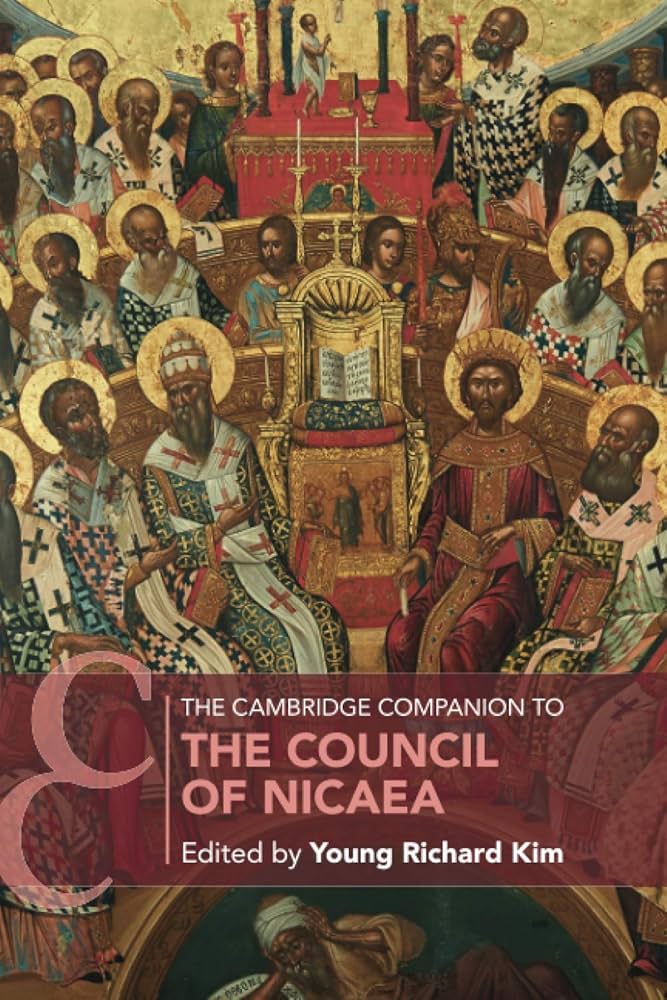
The Cambridge Companions to the Council of Nicaea, edited by Young Richard Kim, is a scholarly collection of essays by skilled historians examining the history of the most important church council ever held. The Nicene Creed summarizes what all historically orthodox Christians (Protestant, Roman Catholic, and Eastern Orthodox) believe about who God is.
A Deep Dive into the History of Christianity’s Most Important Church Council
Through all of the mythological hype about the Council of Nicaea, one bit of truth stands out. It was not a foregone conclusion that the doctrine of the Trinity Christians have inherited today would have won out during the Christological debates of the 4th century. Christians since Tertullian in the second century debated the exact details of the relationship between the Father and the Son, particularly as it pertained to the divinity of Jesus, as the Son of God. In many ways, what eventually became the Nicene view of the doctrine of the Trinity was actually a minority position among a wide variety of understandings of the Godhead in the centuries leading up to Nicaea.
What made the Council of Nicaea into a watershed moment in the history of the church was the controversial claim made by Arius of Alexandria, a presbyter (church elder) who claimed that Jesus was divine, but only in the sense that Jesus as the Son was a divine creature, created by the uncreated Father. While many Christians before Arius were willing to accept some kind of “subordinationism” with respect to the Son subordinated to the Father, it was the Arian insistence that the oneness of God prevented the Son from being of the same uncreated divine essence as the Father that precipitated the theological crisis which led to Nicaea.
The Background to the Council of Nicaea
In the first essay of The Cambridge Companion to the Council of Nicaea, historian Raymond Van Dam surveys the historical backdrop to the controversy, stemming from Emperor Diocletian’s imperial edict to persecute Christianity in the early 4th century. Diocletian had become emperor in 284, and he retired in 305, thus ending the worst of the persecutions. But by the time of his retirement, order had broken down as to who was the rightful emperor of the Roman empire. By 308, there were some six claimants to the position of emperor: Constantine, Licinius, Galerius, Maximinus, and even the former emperors, Maximian and Diocletian. It was a confusing mess of Roman politics for the upcoming years.
Despite the persecution of Christianity, the influence of the Christian church, though far from being in the majority yet, continued to increase, resulting in rival views among the competing emperors. Constantine had his famous vision of the sign of the cross, which precipitated his victory over Maxentius, another claimant to being emperor, at the Battle of the Milvian Bridge, in 312. The following year, Constantine granted religious toleration to the Christians, with the Edict of Milan. But it was not until 324 when Constantine finally pushed Licinius aside to become the supreme and sole emperor of Rome.
However, trouble was brewing in Alexandria, Egypt, the second largest city behind Rome in the Roman Empire. Christians believed that the Son was divine, but in what sense did that mean? Arius was teaching that there was a time when the Son was not. Arius was concerned that by elevating the divine status of the Son to be equal with the Father would undercut the Christian monotheistic conception of God. The bishop of Alexandria, known as Alexander, responded by saying: “Always God, always Son; at once God, at once Son.” Alexander charged that Arius’ position that the Son was a creature diminished the rightful divine status of Jesus as the Son of God.
Constantine was concerned that the rift in Alexandria was splitting the church apart. As emperor, he wanted to rule an empire with a united church, not a divided one, so he called and convened a meeting of bishops from across the empire to meet in Nicaea in 325, in what was then Asia Minor, to resolve the matter.
But the question about the divinity of Christ was not the only subject on the docket at Nicaea. Christians across the empire celebrated the Resurrection of Jesus on different days. Constantine wanted a unified calendar system: One church, one doctrine of God, one calendar, one emperor.
Historian Rebecca Lyman examines the roots of the Arian controversy. For Lyman, Athanansius, the successor to Alexander’s bishopric in Alexandria, Egypt, used the controversy over “Arianism” to respond to a wider theological crisis across the whole of Christendom. As a result, the story of Arius himself gets blurred by the later rhetoric employed by Athanasius to combat critics of Nicene orthodoxy. In other words, what began as a theological dispute about the teaching of Arius down in Egypt mushroomed into a huge, complex controversy, involving several parties, all across the whole Roman Empire.
A Digression…. An Incredible Tale: Athanasius and His Bitter Opponents
The controversy got very wild at times. It is worth taking a digression and recalling an enthralling story I read from The National Review, by John D. Hagen, Jr., from the November, 2025 issue, “Lessons from the Fight for the Nicene Creed.” Hagen tells the story of Athanasius being challenged by the supporters of Arius, who had been effectively humiliated at the Council of Nicaea. In the following years, Athanasius had risen to become the most ardent defender of the Nicene Creed, and his opponents saw an opportunity to try to discredit bishop Athanasius, as a means of trying to regain favor with the emperor.
Emperor Constantine was so befuddled by the situation that he called a synod to meet in Tyre to investigate Athanasius. The campaign to try to discredit Athanasius was so outlandish that it is best to quote the story which Hagen tells…. how could anyone make this stuff up?
Supporters of Arius accused “Athanasius of sorcery, of arrogance and violence, and of consorting with treasonous persons” …. This led to “the tale of Arsenius’s hand.”
“Arsenius, a schismatic bishop in Egypt, hid himself in an Arian plot. The Arians accused Athanasius of murdering him and amputating his hand to use in magical pursuits. The plotters obtained a human hand, which they brandished on suitable occasions to lend credence to the tale.”
“Athanasius’s deacon flushed Arsenius out of hiding and was able quietly to arrest him at Tyre. This gave rise to a scene of high drama: The Arians bring their charges, histrionically brandish “Arsenius’s hand,” and demand Athanasius’s condemnation. Athanasius appeals for order. He calls for those who knew Arsenius to identify themselves, which several bishops promptly do. Then he brings in Arsenius, exposes his hands one by one, and challenges the Arians to show where the third hand had been cut off. The synod erupts in consternation, and one of the plotters runs away…”
Yep. I would call that high drama.
Now back to the book review! …..
The Practical Details of the Council of Nicaea
Ine Jacobs writes about some of the logistical challenges associated with the Council of Nicaea. Nicaea was chosen by Constantine as the meeting place for the council, primarily due to its location, though some recent scholarship suggests that politics may have played a more significant part. The city is located near a lake, Lake Iznik, and along a Roman highway.
The Council of Nicaea was actually not the first church council that Constantine had called, but it was the first council he had attended. As noted by H. A. Drake in his essay, these earlier church councils, more regional in character, held at places like Rome (313) and Arles (314), sought to resolve various controversies in the church, but with little success. By the time Constantine had removed his brother-in-law Licinius from power in 324, he felt it was finally time to tackle the Arian controversy head on with an empire wide council.
Nicaea was not that far from Nicomedia, where Constantine had an imperial palace. In some ways, it would have made more sense to meet at Nicomedia. But Nicomedia had also been the seat from where Licinius had reigned, and the bishop there, Eusebius of Nicomedia, had been more aligned with Licinius against Constantine, as well as being a supporter of Arius.
The cost of travel for the bishops to Nicaea was covered by the state. Counting all of the bishops who attended, and their related staff persons, some 1200 to 1900 might have descended upon Nicaea for the meeting. According to Eusebius of Nicomedia, the meeting was held not in a church but in an imperial palace, though it is likely that this palace was made into a church later.
Historian David M. Gwynn reports that there are no transcript records of the official proceedings, so there is a bit of guesswork required to figure out how the council met. Some 318 bishops were reported to have traveled from across the Roman empire to attend this ecumenical council. However, most of the attendees came from the Greek-speaking East and not the Latin West. Modern scholarship estimates that the number of attendees was actually lower, between 200 to 250.
There was an opening ceremony, which the emperor Constantine presided over, and a final imperial celebration banquet at the conclusion of the council. But it was the bishops who largely led the discussions while the council met. Aside from the Arian controversy, other matters were attended to, the most prominent being the controversy over the date of Easter. Practices for celebrating the date of Easter varied across the church, but the council sought to work towards uniformity. A common date was sought, but the council ruled that the dating method must not derive from the Jewish dating of the Passover.

The story of Santa Claus originated from legends associated with Saint Nicholas of Myra, a 4th century church father who was tortured for his faith during the persecution under Emperor Diocletian. Nicholas attended the Council of Nicaea, but stories about him slapping Arius, the arch-heretic of the council, in the face, arose centuries after Nicaea, so most historians believe these stories are legendary tales about this popular Christian leader.
Nicaea Was Not Just About the Controversy over Christ’s Divinity
The other major topic at Nicaea was to address the schism which resulted from the Great Persecutions under Diocletian, commonly known as the Donatus controversy, named after a controversial bishop in Carthage. Melitus, a bishop in Egypt, sympathetic towards Donatus of Carthage, had insisted that only those presbyters who had remained faithful during the Great Persecution of Emperor Diocletian could properly administer the sacraments, whereas the treatment of lapsed Christians in the rest of the church was far too lenient. Melitus wanted a pure church, but the Nicene fathers concluded that Melitus was too divisive. Melitus was able to retain his position in Egypt, but otherwise he was strongly rebuked by the Council of Nicaea for promoting schism in the church.
H. A. Drake notes that Constantine was surely the “elephant in the room” when it came to the discussions at Nicaea. While modern people today can be quite dismayed over the sorry history of church and state relations in Christian history, it could well be argued that Constantine’s role in urging the bishops to resolve such controversies helped the Roman empire to survive for another thousand years.
Mark J. Edwards corrects a common misinformed idea concerning the “Apostles Creed,” which I grew up thinking went straight back to the first century apostles. Instead, the so-called “Apostles Creed” has its roots in a Latin creed that came into use in the 3rd century in Rome, what some call the “Old Roman Creed.” Because of its Latin origins, the “Apostles Creed” is not recited in Eastern churches.
Interestingly, the most primitive form of the “Apostles Creed” does not include the descensus clause; that is, the phrasing that after the crucifixion of Jesus, he “descended to the dead” or “descended to hell,” as other modern versions put it. Christians in the early church commonly accepted the idea of Jesus’ descending into the realm of the dead, following his crucifixion, but it is curious that this descensus clause was not originally in the “Old Roman Creed.” Historians are not sure when the descensus clause was integrated into the “Apostles Creed,” but that creed as we largely have it today has been in common use among Christian churches since about the 6th century (See my earlier Veracity article on the Apostles Creed for more about the controversial descensus clause.)
The essay by Andreas Weckwerth explains the twenty canons of the Council of Nicaea. Aside from the Arian controversy, and the Donatus controversy, the assembled bishops discussed twenty rulings regarding canon law within the church. For example, the Council of Nicaea forbade those who had castrated themselves from becoming members of clergy. This Canon 1 was designed to discourage various kinds of hyper-asceticism in the church, including a practice which some say that Origen of Alexandria inflicted upon himself (I’ll just leave it that!!). Canon 2 from the Council restricted newly baptized Christians from being too quickly elevated to become members of the clergy. Canon 19 mentioned that the church honored the practice of having women as deaconesses among the clergy. While having women as presbyters was discouraged, it is evident that both men and women served as deacons/deaconesses. Long after Nicaea, some regions of the church made various claims of additional canons passed at Nicaea which actually were never discussed, thereby misusing the authority of the Council of Nicaea to promote certain church laws in those regions. Canon 20 urged Christian worshippers not to kneel on Sundays and during Easter time. Instead, during such times of Christian worship, they should remain standing.

Most Christians figure out when Easter is by looking at a calendar, and trusting what it says. But the calculations for determining the date for celebrating Easter was fraught with controversy during the period of the early church. The controversy stemmed from different ways of recalling the date when Jesus was crucified, and then figuring out the day for celebrating Easter from there. The topic was dealt with at the Council of Nicaea, in 325.
Dating Easter: The Quartodeciman Controversy
Daniel McCarthy writes about the discussion at Nicaea regarding the celebration of Easter, known as “Pasch” in the ancient world. Today, we take it for granted that Easter comes at the time specified by our physical wall calendars, or whatever Google or Microsoft digital calendars tell us. But for several hundred years during the early church period, figuring out when to annually celebrate the resurrection of Jesus (if at all) was a highly contested matter. For many during the 4th century, it was thought that the Council of Nicaea settled the dispute.
Three problems standout as to why dating Easter became so contentious. First, there is the astronomical difficulty, as the solar and lunar calendars are difficult to get in sync with one another. The Old Testament tended to favor the lunar calendar, but the Jewish community over the centuries has had to insert an additional lunar month into the calendar every so often in order to get the Jewish calendar in sync with the solar year. Even the ancient Jews were not universally in agreement, as we know that the community at Qumran favored the solar calendar at the expense of the lunar calendar.
Secondly, there was the issue as to how the timing of the Jewish Passover was linked to the crucifixion of Jesus. John’s Gospel explicitly links the death of Jesus to the date of Passover, treating Jesus as the Passover lamb who was sacrificed. However, the Synoptic Gospels (Matthew, Mark, Luke) dated the crucifixion on the day after Passover (though some have attempted to resolve this difficulty with revised chronology). Those who favored John’s date eventually rubbed against the tradition which was less concerned about linking the date of the crucifixion with the date of the Jewish Passover, typically associated with the Gospels of Matthew, Mark, and Luke.
Thirdly, the dispute was further complicated by considering which event should be focused on the most: the crucifixion of Jesus or the resurrection of Jesus. The practical consideration had to deal with when to break a fast that eventually became the hallmark of Lent. Christians would abstain from eating certain foods, and various Christian communities did this together, and then break the fast together, as an act of celebration. But what was the focus of the celebration, the death of Jesus or the raising of Jesus from the dead?
The tradition had been that Jesus was resurrected on the third day after the crucifixion, but with a moving date for the Passover every year, this did not place the remembrance of the resurrection always on Sunday. If the celebration was primarily focused on Christ’s crucifixion, the celebration tended to line up with the Jewish Passover. But if the celebration was primarily focused on Christ’s resurrection, the timing of the Jewish Passover was less significant.
Different areas of the church therefore used different methods of calculating the date of Easter, which prompted the bishops at Nicaea to come up with a uniform method for assuring that Christians celebrate Easter on the same day. Church historians typically refer to this as the Quartodeciman Controversy. The Quartodecimans, meaning “fourteenth” in Latin, observed the crucifixion of Jesus on the 14th of the Hebrew month Nisan, following the Jewish Passover tradition, which could have been any day of the week. The other side insisted that the resurrection of Jesus was always to be celebrated on Sunday, the “Lord’s Day.”
Since all four Gospels unanimously placed the resurrection of the “first day of the week;” that is, Sunday, this tradition eventually won out, and the direct dependence upon the dating of the Jewish Passover took lesser priority. It was a messy affair which led one bishop of Rome, Victor, at the end of the 2nd century, to excommunicate all of the Quartodecimans, who did not accept the uniform date for Easter on Sunday. But coming up with a clean way of celebrating Easter (or Pasch) on a consistent year-to-year basis, given the difficulties between the lunar and solar calendars was still tricky to resolve. But with emperor Constantine looking on, insisting on a unified solution for all the churches, the bishops at the council sought to resolve the controversy once and for all, giving us the formula for dating Easter which we mostly take for granted today.
Over the following centuries, theologians constructed tables to precisely date Easter, but every now and then, conflicting calculation methods still led to variations as to when Easter would fall, though it now always fell on a Sunday, as the Council of Nicaea ruled. The situation was further complicated when the Gregorian Calendar was adopted in 1582, as the Julian calendar had slipped so much over the centuries. But not everyone agreed with the decision made by Pope Gregory, particularly Eastern Christians who did not recognize the authority of the Western bishop of Rome, and even the English colonists in North America prior to the 1750s.
Prior to the 1750s, many Christians in the American colonies associated with Puritanism never bothered with celebrating Easter, as the celebration of Easter was thought to be “too Catholic,” or even of pagan origin! The confusion was only alleviated in 1752 when the English Parliament formally adopted the Gregorian Calendar, a ruling that was extended to the American colonies, which eventually led to consistent yearly celebrations of Easter in America.
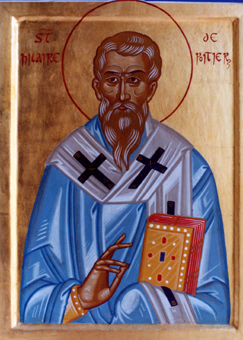
Hilary of Poitiers (about 300 – 367 AD), otherwise known as the “Hammer of the Arians,” for his efforts to defend the doctrine of the Trinity. Hilary was to the Western church as Athanasius was to the Eastern church, by encouraging a revival of pro-Nicene thinking, when it looked like the church would capitulate to anti-Nicene ideologies.
The Aftermath of the Council: And the Formulation of the Nicene-Constantinople Creed
Contributor Aaron Johnson tells the reader about how the Council of Nicaea was narrated by those who reported on it. There were no minutes of the sessions recorded as they happened, so we are dependent upon later interpreters to recall the events and topics discussed. Eusebius of Caesarea, the first great historian of the early church, made the most significant contribution to how Christians remember the Council meeting today.
Sara Parvis describes the aftermath of Nicaea up through the year 360, in how the efforts at Nicaea were effectively reversed in those years after the meeting. Arius’ exile was revoked in 327 by Constantine, just two years after the Council concluded. The controversial word homoousios, which defined the Son as being of the same divine “substance” or “essence” as the Father, was banned from the creed by 360. The great defender of the original creed, the bishop Athanasius of Alexandria, was sidelined by Constantine’s son, Constantius, the subsequent Roman emperor. As bishop, Athanasius was effectively forced into exile perhaps a half a dozen times, resulting from his defence of Nicaea.
The defense of Nicaea made a comeback after 360, as a pro-Nicene alliance eventually emerged. Historian Mark Delcogliano shows how the efforts of Athanasius, who died in 373, were taken up by those like the Cappodician fathers, particularly Basil of Caesarea. When the new emperor, Theodosius, came to the throne, he called yet a new council to meet in Constantinople, to finish the work begun at Nicaea and solidify the historically orthodox, pro-Nicene view of God. What we commonly call the “Nicene Creed,” should more properly be called the “Nicene-Constantinople Creed.”
As an aside, ….. historian Philip Jenkins recently wrote an article about one early church father of the time, another Eusebius (apparently a very common name!!), but this time a Eusebius of Samosata, who was an ardent supporter of the Nicene Creed, against those who were either fully Arian or semi-Arian in rejecting the creed of Nicaea. Eusebius of Samosata was interestingly martyred for his pro-Nicene position, in that he was killed by an anti-Nicene woman, one of the few anti-Nicene lay persons of the day that we know about, who dropped a roof tile on Eusebius’ head, fatally wounding him in a city street. The article is an interesting read!
The early church father Apollinarius, who was known to be an avid defender of the original creed formulated at Nicaea, took an unexpected turn which alarmed his friends. According to Kelly McCarthy Spoerl’s essay, Apollinarius affirmed the incarnation of the Son, in that Jesus had a human body and soul, but he denied that Jesus had lacked a rational human mind. Critics of Apollinarius argued that he was dismissive of the full human nature of Christ. Apollinarius had made statements that the Son was a mixture of humanity and divinity, possessing a divine mind and not a human mind. While the pro-Nicene party was largely unified regarding retaining the language of homoousios to speak of the Son in terms of his divine nature, tensions within that party would eventually require another great council to meet at Chalcedon, in 450, to find a resolution, regarding how to understand the precise relationship between the divine and human natures of Christ.
While Christians have probably heard of the Council of Nicaea (325), and perhaps the follow-up Council of Constantinople (380-381), few know that a number of regional councils were held during the intervening years, dealing with controversies which arose after Nicaea. As historian D. H. Williams observes, the Council of Nicaea did not solve all of the problems regarding the Arian controversy. Instead, new problems arose which led to new councils, few which had any lasting effect. For example, in the 340s, Photinius of Sirmium revived a popular idea known from the second century, the heresy of adoptionism, which according to critics maintained that the Son did not exist until his birth in Bethlehem. Jesus was only adopted as God’s Son, only becoming God at the incarnation.
Constantine’s son, Constantius, while not an Arian by conviction, was driven by political concerns to force the churchmen to more permanently resolve the Nicaea controversies. While Nicaea championed the concept of homoousious, that the Son was of the same divine substance as the Father, others, known as the “Homoian” (or Semi-Arian) party, argued for a kind of middle-way between Arius and Nicaea, that of homoiousios, that the Son was of like substance as the Father, with the insertion of the letter “i” in the word. A council held at Seleucia in the East, and a council held at Arminium, now known as Rimini, in modern day Italy, sought to formalize the Homoian solution, in 359/360.
However, a pro-Nicene movement arose which opposed the Homoian solution, known by historians as the “Dated Creed.” Many pro-Nicenes charged that a number of the bishops at Seleucia and Arminium signed off on the Homoian solution under false pretenses. The death of Constantius left the “Dated Creed” in an uncertain status, and Nicaea champions, particularly Athanasius of Alexandria, sought to revive the Nicene Creed as the official standard for the orthodox Christian church. Within twenty years, the pro-Nicene party triumphed over the Homoian party at the Council of Constantinople, even though Arian and even Semi-Arian (Homoian) confessions persisted into the 5th century. As Williams’ concludes,”It was not inevitable that the Nicene Creed or faith would become the post-fourth-century church’s way of confession.”
The Impact of the Council of Nicaea Down Through the Centuries
This Cambridge Companion concludes with two chapters on the long reception since Nicaea over the centuries. Paul L. Gavriluk discusses the reception history of Nicaea in the Eastern Orthodox tradition, while Geoffrey Dunn discusses Nicaea’s reception in the Western Catholic tradition. The big conflict between the East and the West arose over the filioque clause, whereby the Latin filioque “and the Son,” as added by Western churches to Nicene-Constantinople Creed to say that the Holy Spirit proceeds from the Father “and the Son,” as the phrase “and the Son” was not included in the version confirmed at Constantinople. However, proponents of the filioque in the West contend that some Eastern church fathers had endorsed the concept of the filioque, as a defense for the change to the creed.
The story of the filioque clause insertion dates back to the late 6th century, when the Visigothic king Reccared replaced the old Roman Creed, either the predecessor to the Apostles Creed, or close to it, with the Nicene Creed, with the filioque clause inserted. Reccared’s intention was to bring the Spanish church inline with Nicene Christianity, as an intentional rejection of Arianism. In later centuries, Emperor Charlemagne believed that it was the Eastern church which intentionally removed the filioque from the original creed, which is historically not the case. The Nicene Creed with the filioque insertion was ratified by the Council of Toledo (589).
While all of this may sound rather nit-picky and obtuse to many Christians today, the controversy over the filioque continues to stir up discussion even today. The new Pope Leo released a statement acknowledging the filioque was not part of the original creed, and in a recent trip to Turkey to commemorate the Council of Nicaea, the Roman papal leader did not include the filioque in prayers given, while accompanied by Eastern Orthodox church leaders. Will we see a solution to the filioque controversy within our lifetime? Personally, I welcome it!!
It should be noted that what is known today as the “Nicene Creed,” as formulated finally at the Council of Constantinople, was not formally recorded until the Council of Chalcedon in 451. In the Christian East, no fewer than 18 councils offered creedal alternatives to Nicaea. But what was clearly established at Constantinople, in 381, was an imperial decree:
“The throngs of all heretics must be restrained from unlawful congregations. The name of the One and Supreme God shall be celebrated everywhere; the observance, destined to remain forever, of the Nicene faith, as transmitted long ago by Our ancestors and confirmed by the declaration and testimony of divine religion, shall be maintained. The contamination of the Photinian pestilence, the poison of the Arian sacrilege, the crime of the Eunomian perfidy, and the sectarian monstrosities, abominable because of the ill-omened names of their authors, shall be abolished even from the hearing of men.”
The first recorded usage of the Nicene Creed in the worship liturgy of the church was at Antioch, in the late fifth century. In the Christian West, recitation of the creed in the liturgy was not uniform until perhaps as late as the 11th century. When Emperor Henry II asked Pope Benedict VIII in 1014 why the Nicene Creed was not a standardized part of the liturgy across the entire Christian West, the pope’s reply was that Rome was not subject to the corruption of heresies and had no need for the use of the creed in the liturgy. Nevertheless, the Nicene Creed eventually became the central identity marker of historic orthodox Christianity across the Christian East and West, and it remains that way today.
Even though many churches today only make casual, if any, reference to Nicaea today, the influence of the Council of Nicaea remains the shaping doctrinal statement that unites all of Christendom. While Christians across the globe disagree on many things, including which books should be included in the Bible, etc., at least the Nicene Creed (even despite the filioque controversy) remains the one confession of faith which all believers can profess … and it all began at a meeting of church leaders and a Roman emperor in a lakeside town in what is now modern day Turkey. The Cambridge Companion to the Council of Nicaea is an authoritative scholarly source which articulates the history behind this all influential council and its famous creed.






